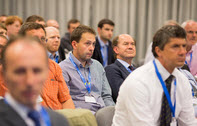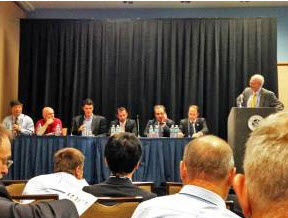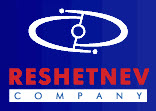Opportunities in LBS consumer applications empowered by Galileo
24 July 2014

The number and variety of Location Based Service (LBS) devices is on the rise: more than half of all mobile phones in Europe and North America are GNSS capable and global yearly shipments of GNSS-enabled LBS devices has grown from 150 million to 1bln over the last five years. How to ensure the European GNSS market capitalises on these opportunities was the topic of discussion at the European Space Solutions Conference.
Today it seems everybody is talking about LBS but few are talking about GNSS and Galileo’s key role in it. In the crowded LBS sector, ‘where is GNSS’?
“GNSS on your smartphone is just one of over a dozen available technologies,” said Justyna Redelkiewicz of the European GNSS Agency (GSA), speaking during the Consumer Applications session of the European Space Solutions conference. “That being said, GNSS’ role in location based services is substantial as it is the primary technology used for outdoor positioning.
LBS is the most important market segment for GNSS use today and will remain so in the future, as the growth forecast for the smartphone market is phenomenal. In 2009, it was forecasted that there would be 450 million smartphones by 2013. Impressive, no doubt. But in reality over 1 billion were shipped. More so, the market is far from being saturated, meaning even more opportunities are on the horizon.
Redelkiewicz believes that future growth will be fuelled by new platforms and applications, particularly those offering non-stop fixed positioning in all environments.
This is good news for Galileo: “Galileo combined with other GNSS systems will improve GNSS location, particularly in challenging environments like urban canyons,” said Redelkiewicz. “More so, Galileo’s unique data-less signals will offer further benefits to the LBS market.”
Using the data-less signal, Galileo enhances indoor penetration, improves performances in urban canyons and in noise measurements and improves sensitivity in A-GNSS mode.
Adrian Stimpson of Rx Networks confirmed that Galileo provides real added value to citizens using Location Based Services (LBS). When used in addition to GPS and/or GLONASS, Galileo proved to significantly improve accuracy in challenging environments such as urban canyons and indoors. Galileo showed improvements in both Time-to-First-Fix (TTFF) and position accuracy for the majority of scenarios.
This improved accuracy will have a profound impact across numerous sectors, including critical situations like E-112 calls. With the European Commission evaluating the mandate of GNSS location on mobile phones for emergency calling purposes, the test results demonstrate the benefit of including Galileo.
“The results should be encouraging to any GNSS chipset manufacturer who is considering adding Galileo as a competitive differentiator,” commented Adrian Stimpson.
GNSS in Action
But the role of European GNSS in the LBS sector is not something waiting to happen, it’s happening today. For example, Qualcomm will make use of multi-constellation GNSS to improve the precision of geo-locating on your mobile phone. “The need for location is evolving, and consumers expect their mobile devices not only to know what they are doing and where, but to anticipate what’s next,” said Will Brown, Senior Director Technical Marketing at Qualcomm. “The key to anticipation is location based information.”
Brown notes one of the key challenges is to improve pedestrian navigation, particularly in terms of low power navigation in dense urban environments. He believes the answer to this is the development of new applications capable of combining various location sensors and resulting in better contextual awareness.
“According to analysts by 2017, indoor location will be a $6 billion market opportunity,” he said. “What we are seeing is a new breed of indoor services for connecting people, with the end goal being to turn your mobile device into a personal assistant.”
Auto developments
Antti Aumo of the Car Connectivity Consortium, a global consortium for smartphone-based connected-car solutions, described their efforts to deliver the leading industry standard for car-smartphone connectivity. Their standard is designed for maximum interoperability between smartphones and cars. Apps developed for the consortium delivered maximum added value in-car while minimizing driver distraction. LBS was an essential element for seamless in-car smartphone use he believed.
Carlo Bagnoli of ST Microelectronics also described positioning trends in automotive and consumer applications. For vehicle apps he also saw fusion of data from multiple sensors as essential and stated that Galileo was now being considered as an option by all carmakers with regard to the likely requirements for the new EU eCall standard.
He also thought that single band, multi-constellation GNSS was becoming a global requirement with its recognised advantages in many critical environments and for Intelligent Transport Systems to deliver sustainable mobility. Some emerging functions, including autonomous driving, would call for cost-effective, precise positioning in the automotive sector.
Perhaps one of the most highly-anticipated uses of GNSS technology in consumer applications is the so called ‘Google Car’. However, the driverless car of the future isn’t the company’s first foray into space-based consumer applications.
“Google’s success has been in its ability to take the complex and expensive and make it usable to the consumer,” said Ed Parsons, Geospatial Technologist at Google. “The secret behind this success is our keen understanding that accessibility always wins.”
As an example, Parson’s pointed to the switch from CDs to MP3s. Even though CDs offer a higher quality sound than MP3s, ultimately the consumer chose the MP3 because it made music more accessible.
“The question we have to ask ourselves is how we can make space more available to the mobile generation,” asked Parsons. “For us, the answer started with Google Earth, which we created without the need for any new technology. We simply took an existing infrastructure and made it more accessible to the consumer.”
Parsons points to television as another example of the power of accessibility. Traditional television programming goes against the modern trend of ‘on demand’. Built on a complex process for distribution, it is unable to provide the on-demand content today’s digital generation wants. To meet this untapped market, Google turned to YouTube.
“YouTube essentially strips away the complexity of distribution in favour of the simplicity of a cloud platform, and it’s revolutionizing the television market,” said Parsons. “We need this same type of thinking for the distribution of geospatial information – what we need is a YouTube like cloud platform for space.”
With the key driver of the LBS market being the development of new consumer-orientated applications, Parson’s stressed the importance of having a simple space platform: “Application developers need to be able to access and use a simple platform,” he said. “Simplicity and accessibility will be the determining factors to fully exploiting this important and growing GNSS market.”
Source
Today it seems everybody is talking about LBS but few are talking about GNSS and Galileo’s key role in it. In the crowded LBS sector, ‘where is GNSS’?
“GNSS on your smartphone is just one of over a dozen available technologies,” said Justyna Redelkiewicz of the European GNSS Agency (GSA), speaking during the Consumer Applications session of the European Space Solutions conference. “That being said, GNSS’ role in location based services is substantial as it is the primary technology used for outdoor positioning.
LBS is the most important market segment for GNSS use today and will remain so in the future, as the growth forecast for the smartphone market is phenomenal. In 2009, it was forecasted that there would be 450 million smartphones by 2013. Impressive, no doubt. But in reality over 1 billion were shipped. More so, the market is far from being saturated, meaning even more opportunities are on the horizon.
Redelkiewicz believes that future growth will be fuelled by new platforms and applications, particularly those offering non-stop fixed positioning in all environments.
This is good news for Galileo: “Galileo combined with other GNSS systems will improve GNSS location, particularly in challenging environments like urban canyons,” said Redelkiewicz. “More so, Galileo’s unique data-less signals will offer further benefits to the LBS market.”
Using the data-less signal, Galileo enhances indoor penetration, improves performances in urban canyons and in noise measurements and improves sensitivity in A-GNSS mode.
Adrian Stimpson of Rx Networks confirmed that Galileo provides real added value to citizens using Location Based Services (LBS). When used in addition to GPS and/or GLONASS, Galileo proved to significantly improve accuracy in challenging environments such as urban canyons and indoors. Galileo showed improvements in both Time-to-First-Fix (TTFF) and position accuracy for the majority of scenarios.
This improved accuracy will have a profound impact across numerous sectors, including critical situations like E-112 calls. With the European Commission evaluating the mandate of GNSS location on mobile phones for emergency calling purposes, the test results demonstrate the benefit of including Galileo.
“The results should be encouraging to any GNSS chipset manufacturer who is considering adding Galileo as a competitive differentiator,” commented Adrian Stimpson.
GNSS in Action
But the role of European GNSS in the LBS sector is not something waiting to happen, it’s happening today. For example, Qualcomm will make use of multi-constellation GNSS to improve the precision of geo-locating on your mobile phone. “The need for location is evolving, and consumers expect their mobile devices not only to know what they are doing and where, but to anticipate what’s next,” said Will Brown, Senior Director Technical Marketing at Qualcomm. “The key to anticipation is location based information.”
Brown notes one of the key challenges is to improve pedestrian navigation, particularly in terms of low power navigation in dense urban environments. He believes the answer to this is the development of new applications capable of combining various location sensors and resulting in better contextual awareness.
“According to analysts by 2017, indoor location will be a $6 billion market opportunity,” he said. “What we are seeing is a new breed of indoor services for connecting people, with the end goal being to turn your mobile device into a personal assistant.”
Auto developments
Antti Aumo of the Car Connectivity Consortium, a global consortium for smartphone-based connected-car solutions, described their efforts to deliver the leading industry standard for car-smartphone connectivity. Their standard is designed for maximum interoperability between smartphones and cars. Apps developed for the consortium delivered maximum added value in-car while minimizing driver distraction. LBS was an essential element for seamless in-car smartphone use he believed.
Carlo Bagnoli of ST Microelectronics also described positioning trends in automotive and consumer applications. For vehicle apps he also saw fusion of data from multiple sensors as essential and stated that Galileo was now being considered as an option by all carmakers with regard to the likely requirements for the new EU eCall standard.
He also thought that single band, multi-constellation GNSS was becoming a global requirement with its recognised advantages in many critical environments and for Intelligent Transport Systems to deliver sustainable mobility. Some emerging functions, including autonomous driving, would call for cost-effective, precise positioning in the automotive sector.
Perhaps one of the most highly-anticipated uses of GNSS technology in consumer applications is the so called ‘Google Car’. However, the driverless car of the future isn’t the company’s first foray into space-based consumer applications.
“Google’s success has been in its ability to take the complex and expensive and make it usable to the consumer,” said Ed Parsons, Geospatial Technologist at Google. “The secret behind this success is our keen understanding that accessibility always wins.”
As an example, Parson’s pointed to the switch from CDs to MP3s. Even though CDs offer a higher quality sound than MP3s, ultimately the consumer chose the MP3 because it made music more accessible.
“The question we have to ask ourselves is how we can make space more available to the mobile generation,” asked Parsons. “For us, the answer started with Google Earth, which we created without the need for any new technology. We simply took an existing infrastructure and made it more accessible to the consumer.”
Parsons points to television as another example of the power of accessibility. Traditional television programming goes against the modern trend of ‘on demand’. Built on a complex process for distribution, it is unable to provide the on-demand content today’s digital generation wants. To meet this untapped market, Google turned to YouTube.
“YouTube essentially strips away the complexity of distribution in favour of the simplicity of a cloud platform, and it’s revolutionizing the television market,” said Parsons. “We need this same type of thinking for the distribution of geospatial information – what we need is a YouTube like cloud platform for space.”
With the key driver of the LBS market being the development of new consumer-orientated applications, Parson’s stressed the importance of having a simple space platform: “Application developers need to be able to access and use a simple platform,” he said. “Simplicity and accessibility will be the determining factors to fully exploiting this important and growing GNSS market.”
Source
06.08.2014




